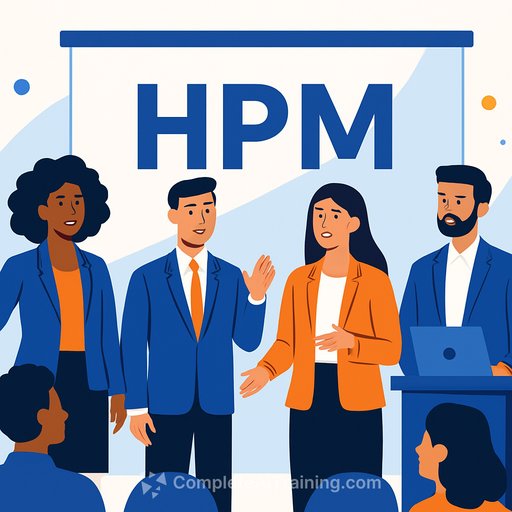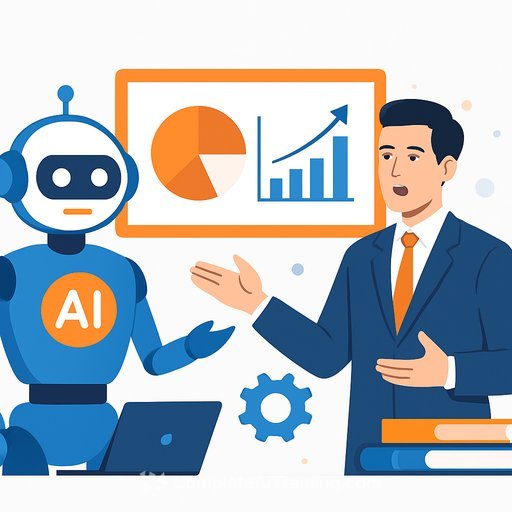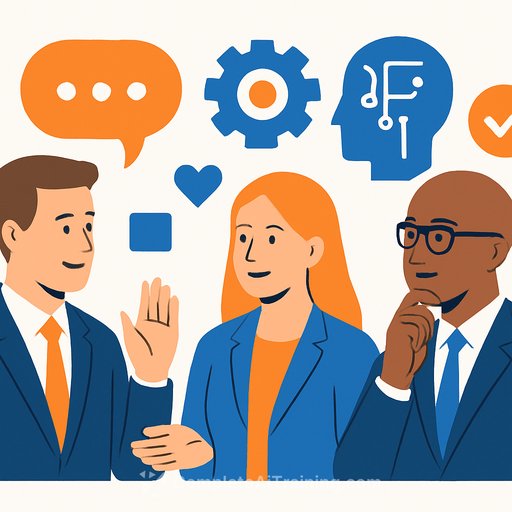Closing the AI Skills Gap Starts with More Intentional Skills Investment
AI is changing what "skilled" means. It's exposing serious gaps in leadership, technology and AI literacy that hold back growth. Only 10% of HR and L&D leaders feel confident their teams can hit business goals in the next two years, and 28% say skill gaps block entry into new markets. If learning doesn't show a clear tie to outcomes, it gets deprioritised.
The fix isn't more courses. It's smarter investment. Treat learning like a strategic asset that builds capability, accelerates execution and supports revenue. That mindset shift turns L&D from a line item into a growth engine.
Why skills ROI goes beyond cost
In an AI-driven economy, capability is currency. With 94% of leaders reporting shortages in AI-critical skills-and a third facing gaps of 40% or more-many organisations can't fill key roles internally. That drags on productivity and slows innovation. The answer is intentional skilling tied to business results, not activity metrics.
Move past completion rates. Measure impact on project delivery, revenue, risk and quality. When skills data connects directly to execution, it earns board-level trust and budget.
From activity to skills intelligence
Skills intelligence links what people learn to what the business achieves. Real-time skills data lets you see who can do what, where gaps exist and how those gaps affect outcomes. It also enables dynamic staffing: the best-fit mix of people and AI agents for each task.
A unified skills framework across humans and AI simplifies governance and reduces risk. It also boosts speed. Right work, right team, right time.
Turning workforce data into strategy
AI can track engagement, performance and on-the-job skill application in real time. Those insights show which learning experiences move the needle and where to double down. They also highlight team-level patterns you can act on now.
Better yet, AI can forecast which skills will matter most in 12-24 months by scanning industry signals and job performance. That lets you build proactive pathways instead of scrambling to plug holes later. For external context, see the Future of Jobs analysis and the NIST AI Risk Management Framework.
From workforce to Skillforce™
The next advantage is a Skillforce: a system where human and AI capabilities are aligned, measured and deployed together. Shared skills language. Unified data. Clear outcomes.
Leaders use this visibility to anticipate risk, fill gaps before they hit performance and spin up best-fit teams in days, not quarters. That translates into faster execution, lower costs and more resilience.
A practical playbook you can run now
- Define business-critical outcomes: revenue targets, cycle time cuts, quality thresholds, risk metrics.
- Map skills to outcomes: what skills drive those results across roles, teams and AI agents.
- Build a unified skills taxonomy: one language across HR, L&D, IT and the business.
- Instrument the flow of work: capture skill signals from projects, tools and performance systems.
- Shift metrics: from completions to time-to-productivity, project success rate, cost per capability and revenue influence.
- Activate dynamic talent matching: assemble teams (people + AI) based on current skills and proven proficiency.
- Forecast and fund: use AI to predict emerging skills and allocate budget where impact is highest.
What to measure (so you can prove ROI)
- Time-to-productivity for new skills and roles
- Project cycle time and rework reduction
- Revenue influenced by skilled teams and AI-enabled workflows
- Quality, safety and compliance metrics tied to skill proficiency
- Internal fill rate for AI-critical roles
- Adoption and performance of AI agents in defined workflows
Questions to align leaders and secure buy-in
- Which skill gaps most restrict growth right now?
- Where do skills directly impact revenue, cost, risk or customer outcomes?
- What real-time data will prove that impact to the board?
- Which roles need a people-plus-AI model, and how will we measure success?
- What will we stop funding to invest in higher-impact skills?
Next steps
Start with one value stream-sales, service, engineering or operations. Map required skills, baseline performance, and run a 90-day skills sprint with clear success metrics. Use the results to expand across the business.
If you need structured pathways and certifications for AI roles, explore curated options by skill or job to speed up planning and execution: Courses by Skill and Popular AI Certifications.
From skills gap to competitive edge
AI is already changing how teams learn, build and deliver. The question isn't if you'll adapt-it's how fast. Organisations that invest with intent, backed by skills intelligence, will move quicker and outperform slower rivals.
Train AI smarter, close gaps faster, and deploy people and agents where they create the most value. That's how you turn learning into a strategic advantage.
Your membership also unlocks:










